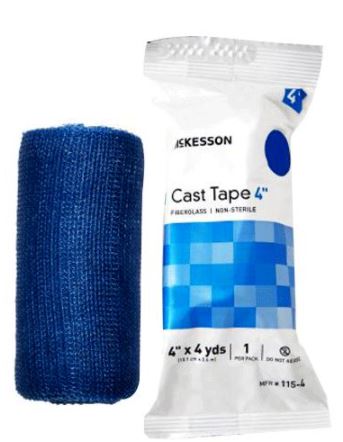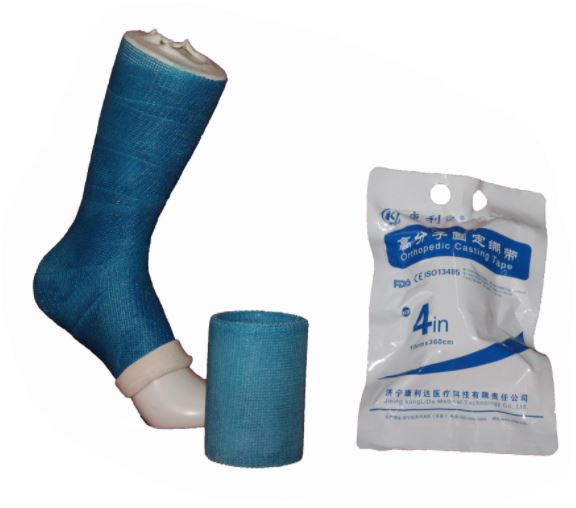CASTING TAPE, SYNTHETIC, resin, 10 cm x 3.6 m
Valid Article
CASTING TAPE, SYNTHETIC, resin
Definition
A synthetic-containing tape that is applied in layers around an injured limb or a part of limb to construct a stiff dressing (cast) in order to immobilize fractured bones, diseased joints, or painful sprains.
Fiberglass casts are lighter weight, longer wearing, and more breathable than plaster. The fiberglass casts are sturdier than the plaster and require less maintenance. They are more expensive, harden faster than plaster and are water resistant
Synonym
fiberglass cast
Specifications
Technical specifications
- Knitted fiber glass bandage impregnated with a water activated polyurethane resin
- Radiotranlucent (about 65%)
- Easy to unroll
- Non sterile, for single use
- Width: 5 or 10 cm
- Length: ± 3.6 m
Packaging & Labelling
Each bandage is individually wrapped in a heat-welded, waterproof sachet
Instructions for use
Precautions for Use
Polymerization of resin starts as soon as the sachet is open and is very rapid (between 3 and 8 minutes). It is therefore essential to choose the width of the tape before opening a sachet and to open only one sachet at a time.
Pay attention to exothermic reaction, particularly in children and sensitive patients: an increase of the water temperature causes an increase of the heat released during the cast hardening.
Protect the area to be casted with a tubular jersey and a cast padding (see related articles below).
Protective gloves must be worn while handling the tape. The polyurethane resin will adhere firmly to unprotected skin and to clothing. If resin should come in contact with skin, swabbing lightly with alcohol while the cast is still uncured may help in removing.
An electrical oscillating saw is needed to remove a synthetic cast. Before casting, make sure that the patient will be able to come back to have the cast removed.
Storage
Protect from sunlight - Protect from humidity










